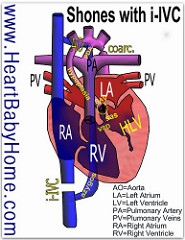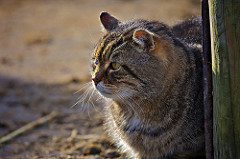A Look Inside Saddle Thrombus
 I’d like to take a moment to touch upon a condition that is not new but has been popping up a bit more frequently called “saddle thrombus”. Normally I try to write articles pertaining to the vast majority of our furry friends, however, this one is exclusive to the feline population.
I’d like to take a moment to touch upon a condition that is not new but has been popping up a bit more frequently called “saddle thrombus”. Normally I try to write articles pertaining to the vast majority of our furry friends, however, this one is exclusive to the feline population.
What is a “Saddle Thrombus”?
A thrombus is a large blood clot found in circulation. A saddle thrombus is only seen in cats and comes from the aorta (a branch off the heart), specifically where it splits into the right and left iliac arteries. A saddle thrombus occurs when a clot breaks off in the aorta and becomes lodged in this saddle area. It comes on quickly and often without any warning.

What Are The Symptoms?
A saddle thrombus will usually result in a partially paralyzed cat, either with one or both back legs being affected, and severe pain. The legs may become cold and have little to no function as the clot blocks the circulation to the back end. When blood supply is impacted, the body sends out inflammatory mediators and a variety of processes become activated to help with the pain.
How Is It Diagnosed?
Aside from the above listed symptoms, a saddle thrombus is usually diagnosed through a history and an X-ray of the heart. Almost always the heart will appear enlarged, especially the left atrium and ventricle as this tends to be where the clot is formed and the body is malfunctioning. It is also suspected that cats with hyperthyroidism have a higher chance of developing saddle thrombus due to the turbulent blood flow.
 Why does this occur?
Why does this occur?
Saddle thrombus is a result of a larger underlying heart condition. Research indicates that 89% of felines with this condition have heart disease. The saddle thrombus is a much smaller clot breaking off from a larger on found in the aorta. According to research, in almost three-quarters of felines with saddle thrombus this is the first sign of heart disease.
What Can Be Done?
Unfortunately, because this condition is in fact an indicator of a much larger problem, the prognosis is not good. Those felines that do recover from the initial episode have a much higher chance of having another episode or dying from heart disease. They will need to be monitored closely and be on medication for the rest of their lives. There is no warning and no way to prevent another episode; so many owners do elect to euthanize their pets based on quality of life and life expectancy.
Conventional Treatments:
Currently used treatments include aspirin (dosage recommendations by your vet), plavix (to help break up the clot and thin the blood), and heparin injections. Each method has its positives and negatives and all will require closely watching your pet. Those felines that do survive the initial episode tend to recover the use of their back legs over a period of a few weeks and the pain subsides after a few days.

Can Chiropractic Help?
If a feline does survive the initial incidence, chiropractic can help bring back function in the back legs. Research has shown that chiropractic adjustments improve blood flow and circulation, simply through clearing the nervous system. By decreasing the stress response through adjusting, the body is able to maintain stability and function at a higher level. Chiropractic can be a great addition to any cat’s standard veterinary regimen, especially those with saddle thrombus.
Sources:
http://www.veterinarypartner.com/Content.plx?P=A&A=3351&S=4&SourceID=42
http://www.peteducation.com/article.cfm?c=1+2129&aid=3622
web-dvm.net/saddlethrombus.html
Photo Credit:
Chatons via photopin (license)
IMG_9074 – 2011-02-05 um 12-24-48 via photopin (license)
Clifford via photopin (license)
It’s in the box ? via photopin (license)
kittens kar 1929 via photopin (license)
Shones, interrupted IVC via photopin (license)




Leave a Reply
Want to join the discussion?Feel free to contribute!